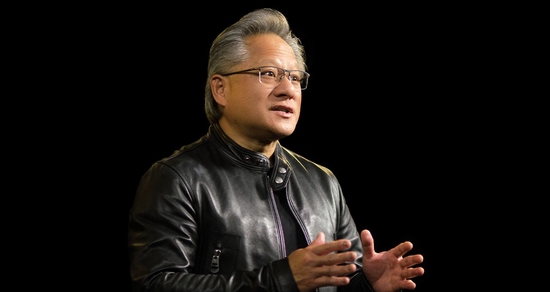your current location is:Home > Finance > depthHomedepth
Chinese phone makers experience toughest year in India
Chinese mobile phone manufacturers in India are experiencing the most difficult year, which is the consensus of almost all relevant practitioners.
Since the fourth quarter of last year, various Indian departments have begun to search Chinese mobile phone manufacturers in various names, including restrictions on employee visas, tax inspections, asset freezes, and criminal investigations.
Xiaomi was one of the key companies searched. After being ordered to repay about $88 million in import duties in January this year, Xiaomi India was seized by the Indian Law Enforcement Agency in April with another $725 million in cash for improperly transferring cash to China. In addition, vivo and OPPO were also investigated by the Indian tax department in July this year and were accused of tax evasion, involving billions of yuan.
At the same time, the capacity of the Indian mobile phone market is also shrinking. According to a report published by Canalys, smartphone shipments in India reached 36.4 million units in the second quarter of 2022, down 5% from the previous quarter. In the top five list, the share of Chinese mobile phone manufacturers reached 67%, but the share has dropped from 74% in the same period last year.
Manufacturer-level activity remained subdued in the second quarter due to lower demand and government scrutiny of Chinese manufacturers, the report said . Rising inflation has reduced consumers' disposable income, and manufacturers are struggling to cover their operating costs.

"In terms of sales volume and profitability, this year is the most difficult year." An employee of a Chinese mobile phone manufacturer in India told Jiemian News that demand for high-end phones in India is weak, while in the low-end and mid-range phone market, in order to be able to Clearing inventory faster, this year's price war is more frantic than in previous years, which has also led to further pressure on profit margins.
Some manufacturers have already shrunk. Honor CEO Zhao Ming once said in an interview with Jiemian News and other media that due to well-known reasons, the Honor India team has withdrawn. However, at present, Honor still has partners in India and has opened related businesses. At the same time, the Indian market has maintained profitability. In the future, Honor will adopt a very safe way to conduct business in the Indian market.
Another employee of a mobile phone company in India also said that a series of suppression measures have indeed had a great impact on daily operations, and there is still no sign of improvement in visa restrictions and other behaviors. The number of employees in his company's Indian branch is only one tenth of the peak period . At present, Chinese manufacturers are conducting compliance rectification, as well as compliance communication and definition in accordance with local government requirements, and continue to wait and see the policy situation.
There are multiple factors behind India's restrictions on Chinese mobile phone manufacturers. A person who has been concerned about the Indian mobile phone industry for a long time summed it up as follows: economic factors are the basis, political factors are the leading factor, and industrial upgrading is the excuse.
He added that India's business environment has never been friendly to foreign investors, as evidenced by the successive withdrawal of foreign car companies such as General Motors and Ford from the Indian market. When the Indian government changes its economic policies, local small and medium-sized traders and oligarchic consortia are often the objects of protection, while foreign capital is the first to be adjusted. At present, the mobile phone industry is one of the few foreign-dominated industries that still has a large scale in India.
One speculation is that India wants to support the local mobile phone industry by suppressing Chinese manufacturers. However, many interviewed people believe that since the core supply chain still relies on China, Indian brands are obviously behind Chinese manufacturers in terms of management experience, technical level, and product capabilities. It is almost difficult to pose a threat, and the possibility of rising in the short term is very low .
Market data also supports this view. Although the share of Chinese brands has declined, the market share of local Indian brands such as Micromax and LAVA has not increased, only 2%. Yang Shucheng, secretary general of the China-India-Vietnam Electronics (Mobile Phone) Enterprise Association, said that if China's mobile phone share declines, the final result will be Samsung's dominance, which is not what India wants to see.
In 2020, India launched the PLI (Production Linked Incentive) program, which provides a series of financial incentives to support the development of 14 key industries including electronics manufacturing, and encourages domestic companies to set up or expand production scale in India to weaken the Dependence on Made in China.
However, Yang Shucheng said that the current transfer to Southeast Asia is more of a part of China's excess capacity, such as assembly lines, patch, chargers, etc., and the core supply chain such as cameras, PCB light boards, etc. remain in China.
According to foreign media reports, India is planning to restrict Chinese mobile phone manufacturers from selling devices priced below 12,000 rupees (about 150 US dollars), thereby boosting India's weakening local mobile phone industry. According to a Counterpoint report, smartphones under $150 accounted for one-third of India's mobile phone sales in the second quarter of 2022, with up to 80% of them being occupied by Chinese companies.
The above-mentioned employees said that if the plan is implemented, Chinese mobile phone manufacturers may be seriously affected. Among Indian mobile phone manufacturers, nearly 90% of Transsion’s sales are below $150, and the damage may be devastating; followed by Xiaomi and realme, with models below $150 accounting for nearly half.
However, many people interviewed by Jiemian News analyzed that Chinese manufacturers do not need to panic too much, and it remains to be seen whether this plan will actually be implemented.
"There is a high probability that it belongs to the parliamentarians, and there is still a long way to go." The aforementioned employee said that almost all foreign-funded manufacturers are paying attention to the measures of the Indian authorities. Restricting imports without legitimate reasons is a hidden thunder for any foreign investment and will cause chain-linking. Influence, such as affecting the rating of India in the international investment environment, will ultimately damage India's own rice bowl.
Yang Shucheng said that as far as we know, the development direction and strategic layout of most Chinese companies in India have not fundamentally changed, because the foundation has not yet been touched. "As long as India's vast market and demographic dividend are still there, there will still be opportunities for Chinese companies."
Previous:Social media division deepens 'American rift'
Next:Microsoft introduces more ads in mobile Outlook app that look like emails
related articles
Article Comments (0)
- This article has not received comments yet, hurry up and grab the first frame~













